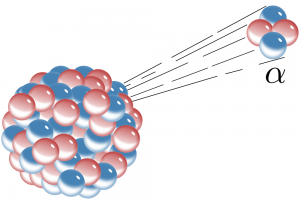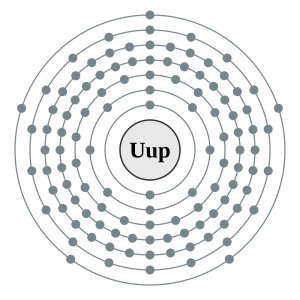Students heading back to school for the new year might need to add a new element to their periodic table of elements in chemistry class.
Swedish scientists say they have fresh evidence that confirms the existence of a previously unknown chemical element.
The new “super-heavy” element is listed as number 115 or Ununpentium (Uup) and has an atomic weight – the average mass of the element’s atom – of 289.
Element #115 was discovered in 2003 (reported in February 2004) by scientists at the Lawrence Livermore National Laboratory in California working with researchers from the Joint Institute for Nuclear Research in Russia (JINR).
This element, considered to be radioactive and classified as a metal, is artificially produced by bombarding atoms of americium-243 — an isotope of the element Americium (Am) — with ions of a rare isotope calcium-48 using a device called a cyclotron.
Scientists say this element probably won’t have any practical purposes, unlike others such as iron (Fe), oxygen (O) or even uranium (U) since it is unstable and has a short half-life of about 220 milliseconds. An element’s half-life is the point in which the nucleus of an unstable atom loses energy to half its value.
Because of its unstable properties, scientists also say element #115 should not have any negative effects on human health or the environment.
Along with making observations of the new chemical element, the research team was also able to gain access to data that provides a deeper insight into the structure and properties of super-heavy atomic nuclei.
“This was a very successful experiment and is one of the most important in the field in recent years”, said Dirk Rudolph, professor nuclear physics at Lund University.
In creating the element, the researchers bombarded a thin film of americium with calcium ions which made it possible for them to measure photons in connection with the element’s alpha decay, which is a process that unstable atoms can use to become more stable.
During an alpha decay, the unstable atom’s nucleus discards two of its protons and two neutrons, creating an “alpha particle” that has a composition identical to a helium nucleus.

diagram showing an alpha particle (α) being ejected from the nucleus of an atom. Protons are red and neutrons are blue.(Wikimedia Commons)
Scientists have said element #115 alpha decays into element #113, dubbed ununtrium (Uut), which in turn decays into roentgenium (Rg) or element #111, which also doesn’t last too long either, with a half-life of about 26 seconds.
Ununpentium is a hybrid Greek and Latin word that loosely translates into one-one-five, the temporary name of element #115, which hasn’t been given an official name.
A committee of experts will first review the new findings so that they can decide whether to recommend further experiments before acknowledging the discovery of element #115.
The team’s findings were published in the “The Physical Review Letters.”























pues pienso que si es atomico podria servir como una nueva fuente de energia renuvable digo no se si este bien mi comentario
This is Mad Mag’s way to remember the Periodic TaBLE OF Elements.
https://www.youtube.com/watch?v=89Y0thzXyvk&list=FLwv3n0cNlV4PXW13m6GT3tg&index=1